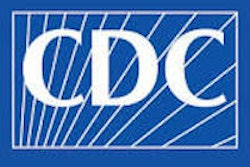
SAN FRANCISCO - The Patient Protection and Affordable Care Act (ACA) will have far-reaching impact on dental insurance, dentists, and patients alike, according to a presentation at the California Dental Association's CDA Presents conference. More low-income children and adults will be covered, and insurers will scrutinize claims to see if dentists are following established protocols for improved outcomes.
Gary Dougan, DDS, MPH, a former private practitioner who is now dental director for the Liberty Dental Plan, explained the impacts of the healthcare law to a well-attended session of more than 200 dental professionals.
He noted that the ACA will usher in sweeping changes to a profession more accustomed to incremental revisions. "We are primarily a cottage profession," Dr. Dougan noted.
Dr. Dougan stressed a little-known aspect of the ACA: The law requires that both providers and insurers have a different awareness of the quality of the care provided. "It's a new concept," he said. "We're being newly analyzed; we're being looked at."
One of the ACA's main goals is providing care to those who have been underserved. "There's a lot of people with lots of disease who are being overlooked," Dr. Dougan said.
"Healthcare is a very subjective type of transaction," he noted. "It's very elastic and not always based on protocols."
One of the law's main benefits allows consumers, for the first time, to compare the prices and coverage among insurance companies.
The big change this year was the mandatory pediatric dental benefit requirement, including medically necessary orthodontic treatment. To qualify, children must have severely handicapping orthodontic malocclusions, similar to Medical requirements, Dr. Dougan said. The new pediatric coverage is similar to California's Healthy Families Program and provides federal subsidies for insurance coverage for children, he said.
Dr. Dougan predicted the ACA will bring in more patients, especially children, because of the pediatric mandate and also poor adults due to the reinstatement of adult Medicaid dental benefits. "You will be busier," he predicted. "There's a lot of pent-up need, and you'll be able to fill empty chair time."
“You'll need to show how you're making your patients better with defined quality measures, and you'll get bonuses for it.”
Another ACA goal is reducing fraud, waste, and abuse in healthcare, and about 10% of healthcare transactions involve one of the three, Dr. Dougan said. "Are some dentists calling fillings on one surface larger than they really are, or do some dentists let family members use another patient's insurance card?" he asked as examples.
Thirteen states have set up their own insurance exchanges, 36 states have opted to be in the federal exchange, and about 7 million people have signed up for ACA coverage.
The next five years pose few changes for the dental profession, Dr. Dougan said.
He predicted that dental care will follow whatever changes the ACA has on the medical profession, but he pointed out that dental care still accounts for only 10% of healthcare costs. "Medical is still driving the bus," he noted.
Currently, the ACA is trying to lessen incentives for physicians to order unnecessary blood tests and MRIs. "This hasn't happened yet in dentistry," Dr. Dougan noted, "but we may eventually have to establish need and follow protocols."
Standalone dental plans will likely give way to embedded or bundled plans that include dental coverage in one policy, he said.
An added benefit of the exchanges is they provide maximums for out-of-pocket payments for patients. Many have a $700 maximum, meaning that any care after that amount is free for patients.
Pay for performance rather than fee for services will become the norm, Dr. Dougan said, unlike capitation plans that paid providers whether or not they saw patients. "You'll need to show how you're making your patients better with defined quality measures, and you'll get bonuses for it," he noted.
New reimbursement models such as paying a flat fee for an hour of chair time or paying the same amount for all dental visits are possible, Dr. Dougan said. Scheduling one filling per visit, as some federally qualified health centers do, is abusive and wasteful, he said.
Physicians will be pressured to meet certain protocols, and they'll be asked if their patients with diabetes have received eye exams and A1C blood tests, he noted. "If you don't meet the protocols, you won't get paid," Dr. Dougan added. "It could make dentistry very different in the future, instead of paying per procedure."
Best practices will be emphasized, such as following published protocols for patients who are obese or have heart problems, Dr. Dougan said.
"We all know we're really good dentists, but are we meeting the needs of our whole patient population?" he asked. "We're going to have to move away from 'I see a space, I must fill it with a bridge,' or 'I see a black dot, I must fill it with a filling.' "
Dentists need to do risk assessments and prioritize their patients, like using caries management by risk assessment (CAMBRA), Dr. Dougan said. "You have to document and be more aware," he advised.
Dentists also need to be aware of how many complaints insurers get from their patients. "Don't just be a good dentist clinically," Dr. Dougan advised. "Be a good dentist service-wise. Know how to communicate with different types of patients."
He also recommended that dentists try to set their practices apart from others, such as providing TV monitors or MP3 players. "Try to differentiate yourself to get your patients to stick with you," Dr. Dougan said.
Dentists should also look at treating "easy" children who need basic care and let pediatric dentists take complex cases, he advised. "You should use this opportunity to do pulpotomies and stainless steel crowns, which are quite profitable," Dr. Dougan said. "If they cry, they cry. When they cry, their mouth is open and you can see their teeth."
He also recommended that dentists use nitrous oxide and offer various sedation techniques to expand their services.
Three states -- Hawaii, New Mexico, and Minnesota -- now charge sales tax on dental treatments, and 14 states are considering it, Dr. Dougan noted.



















